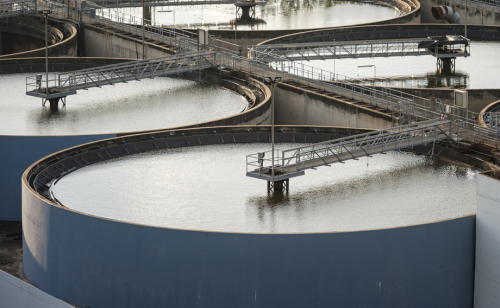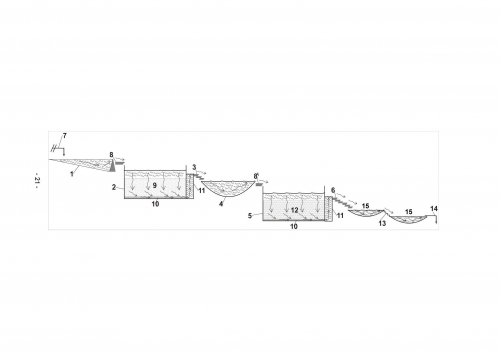Summary of the technology
The technology aims to develop a bioreactor with specialized microorganism able to uptake and degrade micropollutants. To do so the reactor is a column divided in three zones filled with bacteriologically activated carbon (see picture 1):
-In the first upstream zone (treatment zone), bacteria (which ones?) are directly fed with the treated wastewater
-The second zone (recovery zone), bacteria are fed with easily degradable substrate such as sugar derivatives to support the bacterial growth.
-The last upstream zone (training zone), bacteria are fed with structural analogs tailored to the targeted micropollutants. The analogs are chemical compounds tailored to govern bacteria activity towards the degradation of micropollutants by triggering an exoenzyme response.
During the backwash the bacteria of the three different zones are mixed and randomly redistributed. This will allow to move trained bacteria in the first zone and increased the degradation efficiency. The operation of the three zones (training, treatment and recovery) creates an efficient, sustainable and robust process able to degrade wide range of micropollutants.
Details of the Technology Offer
Background:The presence of micropollutants in wastewater are becoming a threat to aquatic ecosystems and to the safety of drinking water resources. Unfortunately, micropollutants are only partially removed by conventional bioprocesses in sewage treatment works and so they are released in surface water. Pharmaceuticals and endocrine disruptors can be harmful for the animals and negative impacts have already been observed in polar bears and fishes. The current state-of-theart technologies are physico-chemical processes such as rapid gravity filter (activated carbon), UV and/or ozone treatment. Those treatment are not adapted to water with a high organic content such as treated wastewater and are costly.
Benefits:
The main benefits of our technologies over physicochemical technologies are:
- Low cost as technology does not require high energy (ozone/UV) or chemicals (activated carbon and ozone);
- Simplicity of use: our system does not require any specific regular tasks or maintenance;
- Wide range of micropollutants can be targeted. Current technologies can be efficient against specific groups of organic due to their chemical properties (give examples);
- Environmental benefits with the absence of chemical usage.
- Applications:
- Wastewater treatment plant operators
- Wastewater Treatment Plants manufacturers and designers with emphasis on industrial applications, requiring solutions to specific micropollutants reduction and/or managing organic waste streams.
- Opportunity:Partnership / industrial collaboration to develop and test a prototype.
- IP Status:
The patent has been already granted ( BE, CH, DE, DK, FR, GB, IE, IT, LU, NL, SE).
Desired business relationship
Technology development
Licensing
Related Keywords


